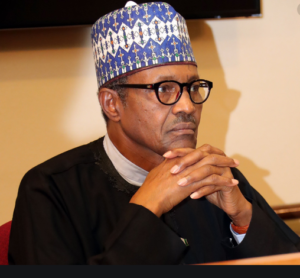
Olatunde Dodondawa | Lagos
Nigeria is the 10th largest producer of crude in the world with capacity to produce 2.5million barrels per day, it has the 10th largest crude oil reserves in the world with 36billion barrels in proven reserves, it has the 9th largest proven gas reserves estimated to be 200.7trillion cubic feet and it is the largest crude oil producer in Africa, yet Nigeria squandered over N8.4trillion on fuel subsidy in 10 years.
Ironically too, Nigeria is one of the two members of Organization of Petroleum Exporting Countries (OPEC) that subsidizes its refined petroleum products. The other is Venezuela.
In May2019, NNPC lifted 8,069,842 barrels of crude oil for domestic utilization translating to an average volume of 260,317barrels of oil per day in terms of performance. In order to meet domestic product supply requirement for the month of May2019 about 7,639,752 barrels were processed under the Direct-Sales-Direct Purchase (DSDP) scheme while 430,090 barrels were delivered to the domestic refineries for processing. Out of a daily 450,000 barrels of crude oil dedicated for the local refineries, only 5.3 per cent was utilized domestically in May 2019 while 94.7 per cent was exported through the Direct Sales Direct Purchase (DSDP) agreement where traders take the crude for export and import premium motor spirit (PMS) otherwise called petrol.
On the average, Nigeria utilizes less than 10 per cent of its local refining capacity. According to the Refinery Financial Performance report as contained in the NNPC Monthly Financial and Operations Report June 2019 edition, the refineries posted a total loss of N156.1billion in one year (i.e June 2018 to June 2019). Hence the reason for the heavy dependence on importation of refined petroleum products for about 200 million Nigerians.
In June 2019, a total of 1.76billion litres of petrol were sold (consumed). This translates to 58.7million litres daily consumption of petrol in Nigeria. While the subsidy under-recovery figure for the month of June is yet to be made public, it is noteworthy to state that Nigeria spent N712billion (N718,774,166,053.00) only as fuel subsidy for petrol between March 2018 and March 2019. And of particular interest was subsidy figures recorded in January 2019, N104,347,173,012.00 and February 2019, N102,338,409,727.00.
Prior to these election months (January and February 2019), the highest ever recorded within the fiscal year was N80billion in the month of June 2018 and the lowest being N3billion in the month of November 2018, according to June 2019 edition of the NNPC Monthly Report. With the same population, with same consumption pattern, without any record of natural disaster within the period, then, it is the responsibility of the National Assembly to unearth how Nigeria recorded such humongous figure as subsidy in January and February 2019 respectively.
With an average of N700billion annually as fuel subsidy, Nigeria may have spent not less than N8.4trillion in 10 years. However, according to an analysis by BudgIT, Nigeria has spent N10trillion between 2006 and 2018 (12 years).
How much does it cost to build a refinery?
The cost of building a refinery differs from one country to another, from one region to another. But certain cost features are present in any typical refineries and with these, one can have an idea what a refinery costs.
In 2017, the Canadian Government reviewed upward the cost of its proposed 78,000 barrels per day refinery from $8.5billion to $9.3billion and there were immediate calls for audit to verify the need for such upward review of the contract.
Dangote’s 650,000 barrels refinery under construction may likely gulp between $12-$14billion in the end and this is bigger and better than the Nigeria’s four outdated refineries (Kaduna, Port Harcourt I&II and Warri refineries) with combined capacity of 450,000 barrels per day production .
Nigeria’s dependence on importation of refined petroleum products was due to its inability to develop local refining capacity. With the much needed political will, Nigeria would have built twice the Dangote Refinery with the N8.4triilion ($23.3billion) wasted as fuel subsidy in the last 10 years. But lack of political will by the political class has sustained the subsidy regime over the years in not just the oil and gas sector, but in several other sectors including the power sector.
The failure of the Nigerian state-owned refineries has not only ridiculed the nation globally, but has thrown up huge socio-economic implications. Senegal runs one refinery with a 27,000bpd capacity; Cameroon has one with 42,600bpd capacity; Congo has one with 21,000bpd capacity; Niger Republic has one with 20,000bpd capacity; Chad has one with 20,000bpd; Zambia has one with 34,000bpd capacity; Gabon has one with 25,000bpd capacity; Algeria, 499,000bpd; Libya, 380,000bpd; South Africa, 626,500bpd and Egypt 1,102,550bpd.
None of these African countries imports fuel.
Over the years, about $20 billion is reported to have been spent on Turn Around Maintenance (TAM) of refineries by the NNPC, but none of them worked up to their capacity at any time. Now, the begging question is: How much does it cost to build a new refinery?




